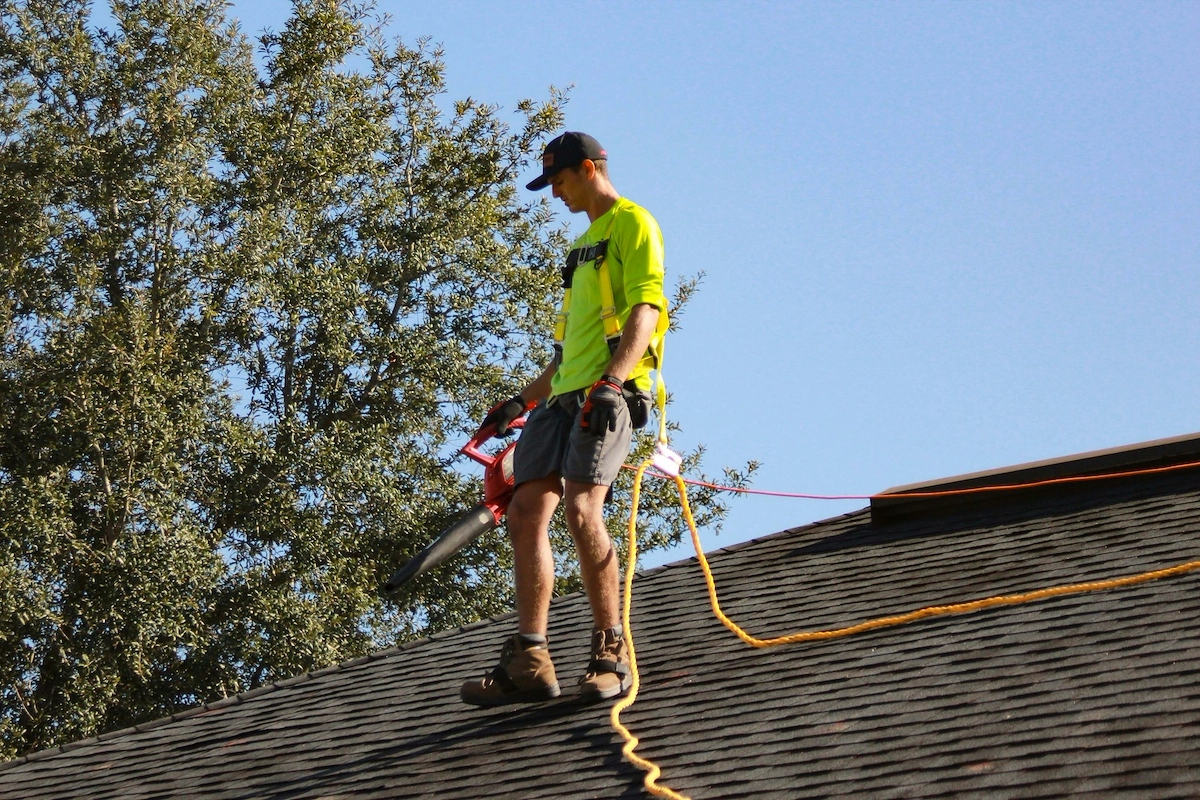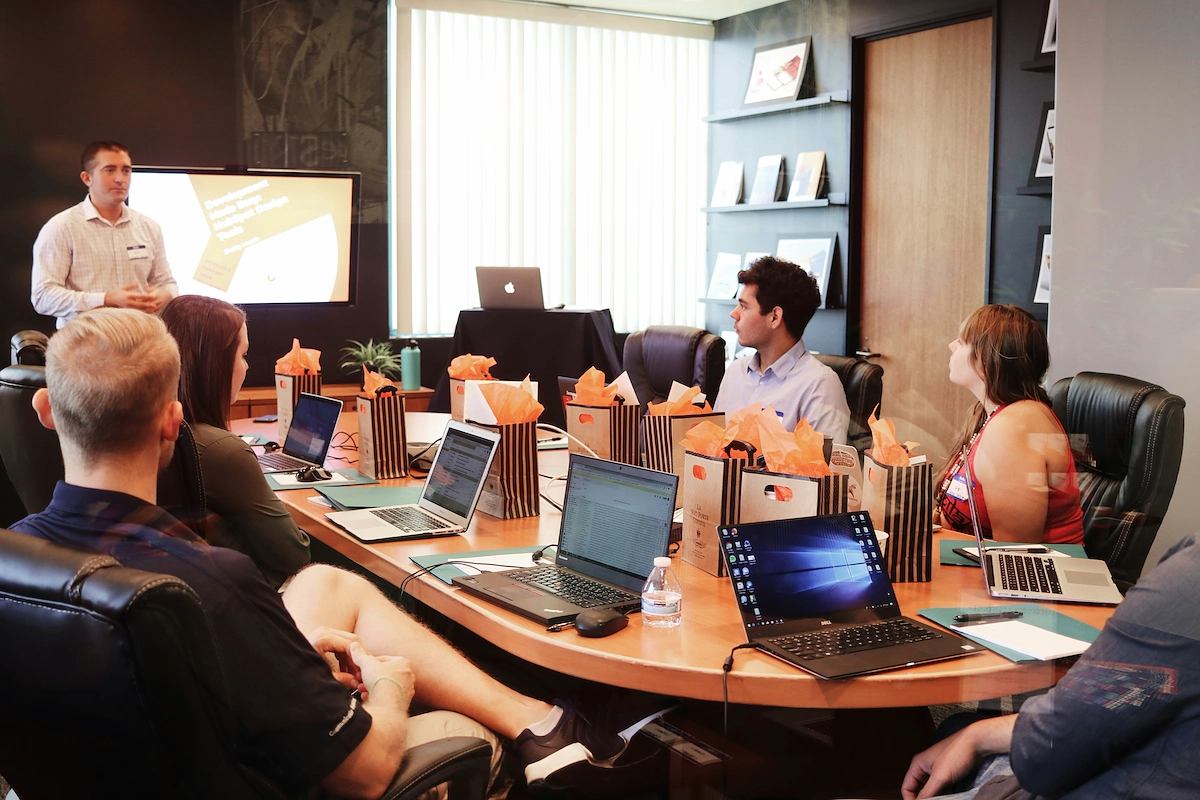Starting a roof cleaning business is a rewarding venture that combines practical skills with business savvy. The exterior cleaning market is a multi-billion dollar industry, with steady demand for services from residential homeowners, property managers, and commercial businesses.
This guide will take you through the practical steps of validating your business concept, securing funding, obtaining necessary licenses, and acquiring the right equipment to help you launch a successful roof cleaning business in the U.S.
Step 1: Plan your business and validate your market
Market and competitor research
First, define your service area. Drive through target neighborhoods and note the types of roofs and their condition. This gives you a real-world view of demand. You can also check local online forums and community groups for discussions about exterior cleaning needs.
Next, look up competitors on Google Maps and the Better Business Bureau. Analyze their websites, service offerings, and customer reviews. A frequent misstep is to compete only on price. Instead, find a gap you can fill, like a focus on delicate tile roofs or eco-friendly cleaning solutions.
Estimate your startup costs
Your initial investment will likely range from $4,000 to $10,000. A significant portion of this budget is for equipment. You might want to allocate between $3,000 and $7,000 for a professional soft wash system, ladders, and safety harnesses.
Other costs include general liability insurance, which can run from $500 to $1,500 per year, and business formation fees of about $100 to $500. Set aside another $500 to $1,000 for initial marketing efforts like a simple website and printed flyers.
Here are 3 immediate steps to take:
- Identify and list five local roof cleaning competitors and their primary services.
- Create a detailed startup budget based on the cost ranges provided.
- Drive through three potential neighborhoods to assess the number of homes that need roof cleaning.
Step 2: Set up your legal structure and get licensed
First, choose a business structure. Most roof cleaners start with a Limited Liability Company (LLC). It protects your personal assets, like your home and car, from business debts or lawsuits. You can file for an LLC through your state's Secretary of State website for about $50 to $500.
Once your business is registered, get an Employer Identification Number (EIN) from the IRS. It’s free and you will need it to open a business bank account and file taxes. This step is important for keeping your personal and business finances separate from day one.
Licenses and regulations
You will need a general business license from your state. In addition, contact your city or county clerk’s office for a local operating permit. A frequent oversight is skipping this local step, which can result in work stoppages and fines. These permits can cost between $50 and $400.
For safety, you must follow Occupational Safety and Health Administration (OSHA) rules. Pay close attention to fall protection standards. Also, be aware of the Environmental Protection Agency (EPA) Clean Water Act, which regulates discharging cleaning solutions into storm drains.
Here are 3 immediate steps to take:
- Decide on an LLC structure and file the paperwork with your Secretary of State.
- Apply for a free EIN on the official IRS website.
- Call your city hall to inquire about the specific business operating permits needed for exterior cleaning services.
Step 3: Secure your insurance and manage risk
With your business structure in place, the next move is to protect it. Insurance is a non-negotiable for this line of work. Some new owners make the mistake of getting a generic policy, only to find it does not cover industry-specific accidents like chemical runoff or property damage from overspray.
Types of insurance you need
Start with General Liability insurance. A solid policy provides $1 million to $2 million in coverage. This typically costs between $1,000 and $3,000 per year. It protects you if you damage a client’s property or if someone gets injured.
If you hire anyone, you will need Workers’ Compensation. You should also get a Commercial Auto policy for your work vehicle. To protect your pressure washer and other gear, look into an Inland Marine policy, which covers equipment in transit or at a job site.
You might want to consider providers like Hiscox, Next Insurance, or The Hartford. They specialize in policies for contractors and understand the risks you face. An agent who knows the cleaning industry can find you the right coverage without overpaying.
Here are 3 immediate steps to take:
- Request quotes for a $1 million general liability policy from three different insurers.
- Ask each provider if their policy explicitly covers overspray damage and chemical runoff.
- Inquire about adding an inland marine policy to protect your equipment.
Step 4: Get your equipment and set up a base
You do not need a commercial storefront. Most roof cleaners operate from home. You will need a secure, dry space of about 150-250 square feet, like a garage or a large shed, to store your equipment and chemicals. Check your local zoning laws for home-based business regulations.
Your equipment list
Your main purchase is a soft wash system, which runs from $3,000 to $7,000. This is not a pressure washer. Some new owners make the mistake of using high pressure, which can strip granules from shingles and void roof warranties. A proper soft wash system uses low pressure to apply cleaning solutions.
You will also need a 28- to 32-foot extension ladder ($400-$700) and a complete fall protection kit with a harness and ropes ($300-$500). For chemicals, look at suppliers like Sun Brite Supply or Powerwash.com. They sell solutions in 5-gallon pails, so plan your storage space accordingly.
Here are 3 immediate steps to take:
- Research your local municipal code for rules on storing chemicals at a residential property.
- Price out a complete soft wash system from two different suppliers.
- Get quotes for a 28-foot extension ladder and a full fall protection kit.
Step 5: Set up your payment and invoicing system
Payment processing
Establish clear payment terms from the start. A common practice is to require a 50% deposit to book the job and the remaining 50% upon completion. This secures your schedule and covers initial chemical costs. Some new owners skip the deposit, which can lead to last-minute cancellations.
You should accept cash, checks, and credit cards. For roof cleaning businesses that need to accept payments on-site, JIM offers a streamlined solution. With JIM, you can accept debit, credit, and digital wallets directly through your smartphone. Just tap and done.
At just 1.99% per transaction with no hidden costs or extra hardware needed, its rate is competitive. Many other providers charge between 2.5% and 3.5%. It's particularly useful for collecting final payment immediately after a client walks through and approves the work.
Getting paid with it is a simple three-step process:
- Get Started: Download the JIM app for iOS.
- Make a Sale: Type the sales amount, hit sell, and ask your customer to tap their card or device on your phone.
- Access Funds: Your money is available right on your JIM card as soon as the sale is done. No waiting for bank transfers.
Here are 3 immediate steps to take:
- Draft your standard payment terms, including a 50% deposit policy.
- Download the JIM app to see how it handles on-site payments.
- Create a basic invoice template that lists your services and payment terms clearly.
Step 6: Secure funding and manage your finances
Find your funding
SBA Microloans are a great starting point. You can borrow from $500 to $50,000. Interest rates usually fall between 8% and 13%. Lenders will want to see a detailed business plan, so have your numbers from Step 1 ready.
You might also consider equipment financing. The loan is secured by your soft wash system, which can make approval easier. A frequent misstep is financing too much gear at once. Stick to the essential equipment you identified in Step 4 to keep payments manageable.
Plan your working capital
Now, let's talk about working capital. This is the cash you need for daily operations like fuel, insurance, and marketing. For the first six months, aim to have $4,000 to $6,000 set aside. This buffer is your safety net before jobs become consistent.
Here are 3 immediate steps to take:
- Check the SBA's website for a local Microloan lender.
- Get a quote for equipment financing on a soft wash system.
- Calculate your working capital needs for the first six months.
Step 7: Hire your first crew and set up operations
When you are ready to expand, your first hire will likely be a Roof Cleaning Technician. This person handles the on-site work. Expect to pay between $18 and $25 per hour, depending on their experience. Their duties include ladder work, equipment operation, and basic customer communication.
Some new owners try to save money by classifying technicians as independent contractors. This can lead to serious tax penalties. It is better to hire them as W-2 employees from the start to avoid legal trouble with the IRS.
Training and scheduling
Before anyone works on a roof, they need safety training. Make sure your team completes an OSHA-compliant fall protection course. You might also consider Power Washers of North America (PWNA) certification to build your company’s credibility and skills.
To manage jobs, look at scheduling software like Jobber or Housecall Pro. These platforms help you track appointments, dispatch crews, and send invoices from one place. As a benchmark, aim for each technician to help generate $75,000 to $100,000 in annual revenue.
Here are 3 immediate steps to take:
- Draft a job description for a Roof Cleaning Technician, including pay and responsibilities.
- Research local providers for OSHA-compliant fall protection training.
- Sign up for a free trial of Jobber or Housecall Pro to test their features.
Step 8: Market your business and get customers
Digital and local marketing
Start with a free Google Business Profile to appear on Google Maps. After each job, ask the client for a review. Your goal is to get 10-15 positive reviews within your first 90 days to build trust.
You can also run Facebook Ads targeting homeowners in specific zip codes. A daily budget of $20 can generate leads. Expect a customer acquisition cost (CAC) between $50 and $150 for each secured job.
Some new owners focus only on digital ads and miss simple, local tactics. A proven method is the "5-around" strategy. After you finish a job, leave a door hanger at the five closest homes. This can yield a 1-3% response rate.
Also, build a referral network. Connect with local roofers, real estate agents, and property managers. Offer them a 10% finders fee for every job they send your way that you successfully book.
Here are 3 immediate steps to take:
- Set up and verify your Google Business Profile.
- Design a simple door hanger with your contact information and services.
- List three local roofers or real estate agents to contact for partnerships.
Step 9: Price your services and create quotes
Set your pricing model
Most roof cleaners price jobs by the square foot, typically between $0.20 and $0.75. A simple 2,000-square-foot asphalt shingle roof might be priced at $0.25 per foot, for a total of $500. A steep tile roof with heavy stains could command $0.75 per foot or more.
Some owners make the mistake of giving a flat rate without a site visit. Always account for roof pitch, accessibility, and the level of algae growth. These factors directly impact your time and chemical use. A complex job can take twice as long as a simple one.
Calculate your profit margin
Aim for a gross profit margin of 50% to 65% on every job. This means if you charge a client $600, your direct costs for labor, fuel, and chemicals should not exceed $240 to $300. This margin ensures you cover overhead and build a healthy business.
When you create a quote, itemize the service clearly. Use a simple template that lists the total square footage, the price per foot, and any extra charges for difficult access or heavy staining. This transparency helps clients understand the value and justifies your price.
Here are 3 immediate steps to take:
- Calculate your base price per square foot for a standard, low-pitch asphalt roof.
- Call two local competitors for a quote on a specific address to understand market rates.
- Create a digital quote template that details the scope of work and pricing breakdown.
Step 10: Scale your business and maintain quality
Establish your quality standards
Create a simple quality control checklist for every job. It should confirm 100% removal of algae and moss, no granule loss on shingles, and no damage to surrounding plants. Take before-and-after photos to document your work and build a portfolio.
Some owners neglect these standards as they get busier. To prevent this, have the client sign off on the checklist upon job completion. This simple step ensures satisfaction and reduces callbacks. Aim for a callback rate below 3%.
Know when to grow
Once you consistently book more than four jobs per week, it is time to consider hiring another technician. A solid revenue benchmark for expansion is when your business surpasses $100,000 annually. This indicates you have enough demand to support another crew member.
When you expand, reinvest in efficiency. This might mean a second soft wash system or upgrading to scheduling software like Jobber or Housecall Pro. These platforms help manage a larger team and more complex job schedules without letting details slip through the cracks.
Here are 3 immediate steps to take:
- Create a post-job quality control checklist with at least three specific standards.
- Set a weekly job target that will trigger your first or next hire.
- Research the Power Washers of North America (PWNA) certification requirements.
You now have a solid roadmap for your roof cleaning business. Remember that your reputation is built on protecting property as much as cleaning it. Focus on careful work and clear communication. With a solid plan, you are ready to build a successful business from the ground up.
As you complete jobs, make sure getting paid is simple. JIM turns your phone into a card reader, so you can accept payments on the spot for a flat 1.99% fee, with no extra hardware. It keeps your cash flow steady. Download JIM to get started.















